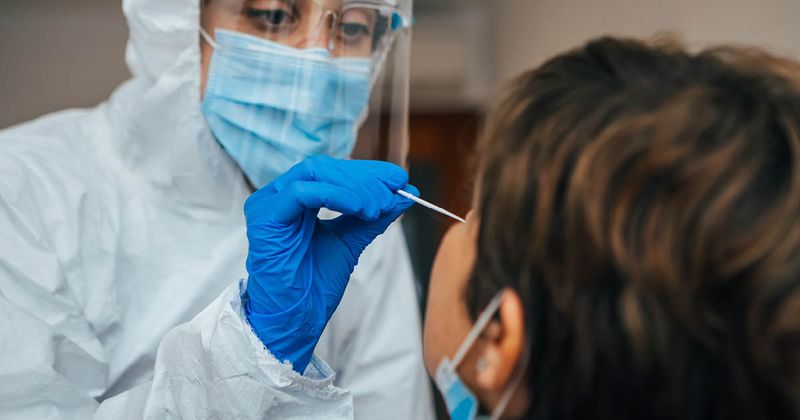High nasal and total SARS-CoV-2 RNA levels associated with longer recovery
Respiratory tract and total body burden of SARS-CoV-2 infection could predict how long patients will take to recover and provide insight into long COVID, according to a recent study published in Clinical Infectious Diseases.
“Prolonged COVID symptoms limit daily activities and delays the return to work and school, but we don’t yet have a good understanding of what causes some individuals to have longer symptoms than others,” Jonathan Z. Li, MD, infectious disease physician-scientist at the Brigham and Women's Hospital and Harvard Medical School, told Healio. “The goal of this study is to determine where there’s a link between levels of SARS-CoV-2 RNA in the nose and plasma with duration of symptoms.”

The study, called the Accelerating COVID-19 Therapeutic Interventions and Vaccines (ACTIV)-2/A5401 study, a multicenter phase 2/3 adaptive platform randomized controlled trial, assessed the evaluation of therapeutics for COVID-19 in nonhospitalized adults. According to the study, nonhospitalized patients aged 18 years and older with documented SARS-CoV-2 infection, no more than 10 days of COVID-19 symptoms and ongoing symptoms 48 hours before enrollment were eligible for the study.
Patients were considered part of the high-risk group if they had certain comorbidities, including chronic lung disease or moderate to severe asthma, body mass index greater than 35 kg/m2, hypertension, cardiovascular disease, diabetes, or chronic kidney or liver disease and those aged older than 55 years.
Additionally, the researchers included only participants randomly assigned to and who received placebo by infusion for the first three investigational agents studied in ACTIV-2 (bamlanivimab 7,000 mg and bamlanivimab 700 mg, both in phase 2 and amubarvimab/romlusevimab 1,000 mg/1,000 mg in phase 2/3) between August 2020 and July 2021.
Overall, 559 participants were included in the study, 7% of whom were vaccinated against COVID-19 before study entry and 86% of whom met criteria for being at higher risk for COVID-19 progression. According to the study, median symptom score at entry was 10, with 150 of 534 participants with available entry diary reporting at least one symptom as severe, whereas three were asymptomatic to all 13 symptoms assessed at study entry.
Of the study participants, 523 and 467 had anterior nasal (AN) and plasma SARS-CoV-2 RNA available at study entry, respectively. The study demonstrated that detectable plasma RNA (89 of 467) but not AN RNA level was associated with more severe symptoms at entry.
Additionally, participants with both available AN RNA and a symptom score greater than zero at entry were analyzed (n = 499). Researchers found that participants with baseline AN RNA of 6 log10 copies/mL or more had a significantly longer time to symptom improvement compared with those with AN RNA of less than 2 log10 copies/mL (16 vs. 9 days; adjusted HR = 0.63; 95% CI, 0.47-0.84), as well as prolonged time to symptom resolution (25 vs. 15 days; aHR = 0.6; 95% CI, 0.43-0.82).
For select symptoms, patients with AN RNA of 6 log10 copies/mL or more had delayed resolution of cough (aHR = 0.63; 95% CI, 0.45-0.87) and shortness of breath (aHR = 0.63; 95% CI, 0.42-0.96) but not fatigue or body pain. In a similarly adjusted model, they also found that detectable plasma SARS-CoV-2 RNA was associated with delayed resolution of cough (aHR = 0.67; 95% CI, 0.5-0.9), shortness of breath (aHR = 0.67; 95% CI, 0.47-0.97) and body pain (aHR = 0.74; 95% CI, 0.55-0.99) but not fatigue.
Based on these findings, Li said that the respiratory tract and total body burden of SARS-CoV-2 infection can be used to predict how long patients will take to recover and provide insight into why some patients have delayed recovery.
“The caveat is that most participants in this study were not vaccinated — they were recruited when vaccinations were not available or when access to vaccinations was limited — it was pre-omicron era, and we only looked at acute symptoms rather than ‘long-COVID,’” Yijia Li, MD, clinical assistant professor of infectious diseases at the University of Pittsburgh Medical Center, told Healio. “Future studies are warranted to look into these aspects.”









